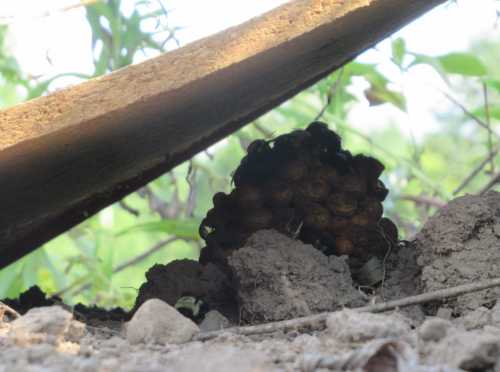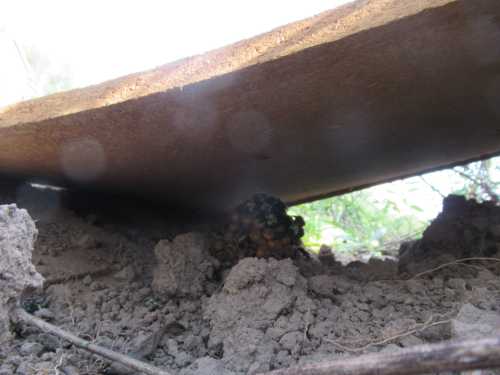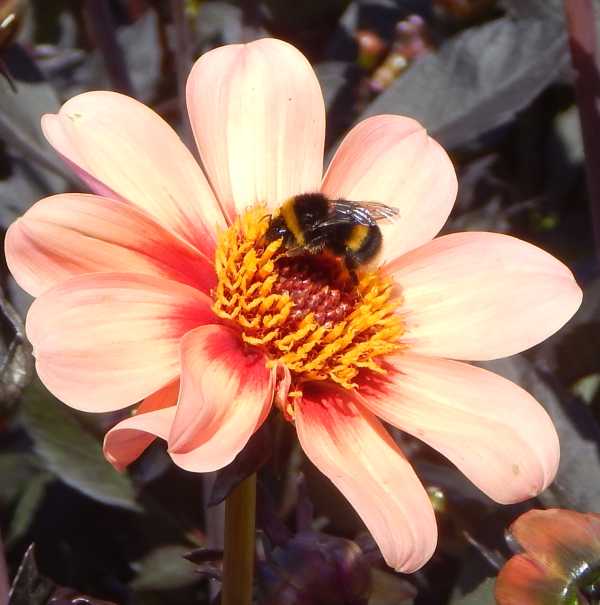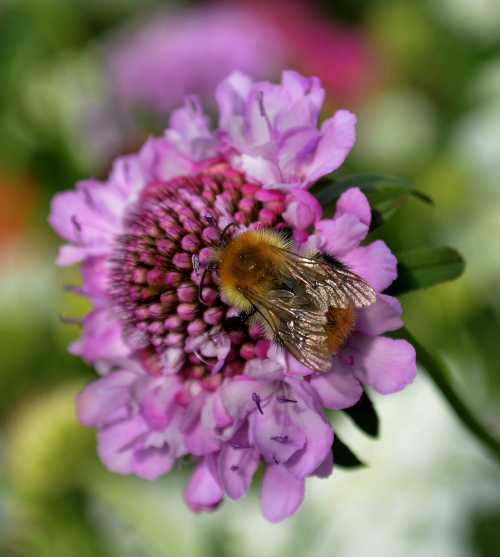Query: Unearthed Bumble Bee Nest
I received this query regarding an accidentally unearthed bumble bee nest. My response is beneath it.
Hello,
While landscaping with my tractor, I unearthed a bumble bee nest.
It looks intact and has quite a number of bees around it.
I covered it with a piece of plywood (the nest is at the base of a dirt pile) - the plywood gives them shelter and unrestricted access.
Will the bees relocate? Seems late for them to be trying to build a new nest when it is almost Fall.
I assume the nest is full of honey and larvae?
Should I consider bringing the nest into my garage for the winter (always above freezing)?
I would like to do what I can to ensure that the bees survive to next spring.
What is your advice?
Thanks
- Martin, Canada
 It transpired that the nest was that of the Common Eastern Bumble Bee, Bombus impatiens
It transpired that the nest was that of the Common Eastern Bumble Bee, Bombus impatiensMy reply:
Dear Martin
Thank you for your email regarding the bumble bee nest.
Regarding the safeguarding of the nest, it is very kind of you to care about the bumble bees, it always warms my heart when people want to help them.
From the description and due to the time of year, I suspect the nest is quite mature, or one of the bumble bee species which emerges and becomes active later in the year. In any event, they are unlikely to attempt to relocate, but will continue to rear young as best they can, and may even attempt some 'nest repairs'.
There is no need to attempt to take them into the garage - this would probably cause more upheaval and disturbance, but also is unnecessary since the colony will die out naturally before the end of the year.
The colony needs to produce queens and males from where they are, and it is the young queens that will feed, then find somewhere to sleep for the winter.
These queens will reappear next year and will rear colonies of their own. Depending on the species, a queen or two might even overwinter in your garage, or elsewhere on your land.
I hope this helps. You have done all you can by providing shelter, and hopefully they will be able to thrive.
Again, thank you for caring
With warm wishes
Amanda
 Additional view of the nest.
Additional view of the nest.Martin sent me some great photographs to share. He rightly identified that this is a nest of the Common Eastern bumble bee, Bombus impatiens.
This mature nest will include eggs, larvae and food stores (nectar and pollen).
This species generally nests in crevices in the soil, so providing cover was a good idea.
Martin added that he has been concerned about bees in general for some years and that he had considered building some hives (but not to harvest honey), although he was no longer sure this was the best idea, given an article he had recently read.
Martin also stated that he has 98 acres of land (mostly forest) and a large wildflower meadow for pollinators. He cuts the meadow once a year in late fall.
My response was as follows:
I don't think you need to add bee hives to your land, you are already helping enormously. Bee hives serve honey bees, and are really for beekeepers to 'manage' colonies [bumble bees don't make honey].
Since you are not interested in harvesting honey, then I would leave it to nature.
It's possible a wild honey bee colony will turn up, and nest in the area, perhaps in an old tree trunk. In my opinion, the wild colonies are the healthiest, and their nest sites better than any manmade hive.
This article covers why it's not always a good idea to keep bees:
This second outlines the importance of honey bees, contrary to some arguments that can be read or heard elsewhere on the web:

